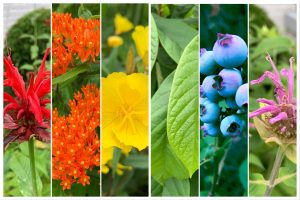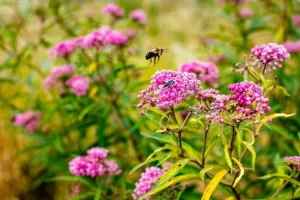In an era of increasing environmental awareness, landscaping with native plants is becoming increasingly popular. Native plants not only provide vibrant and diverse landscapes but also play a crucial role in supporting local ecosystems and promoting sustainable development. In this comprehensive list of native plants, we’ll discuss the numerous benefits of using native plants in your landscaping and offer a range of beautiful options for your garden.
The Importance of Native Plants
Native plants are species that occur naturally and have adapted to a specific area for thousands of years. They evolve together with the local wildlife, creating a harmonious relationship that benefits both plants and animals. Here are some key reasons why native plants are vital:
- Protection of biodiversity: By planting native species in your garden you can help protect local biodiversity. Native plants attract native insects, birds, and other wildlife, providing them with an important food source and habitat. This in turn supports the overall health of the ecosystem.
- Water efficiency: Native plants are well suited to local climate conditions, requiring less water. Their deep root systems help prevent soil erosion and filter rainwater, improving water quality.
- Low maintenance costs: Once established, native plants generally require less maintenance than non-native species. They adapt to local soil conditions and climate, reducing the need for chemical fertilizers and pesticides.
- Resistant to diseases and pests: Native plants have developed natural defenses against local pests and diseases, making them more resilient and reducing the need for chemical interventions.
Native Plant Options for Your Garden
Now that we’ve established the importance of native plants, let’s explore some beautiful options you can consider for your garden:
- Echinacea purpurea: This beautiful wildflower has vibrant purple petals and a prominent, tapered center. It is a favorite with pollinators and attracts bees and butterflies. Eastern agarwood thrives in well-drained soil and full sun.
- California poppy (Eschscholzia californica): California poppies are known for their bright orange and yellow flowers, which add a pop of color to any garden. It is drought tolerant and prefers full sun, making it an excellent choice for arid areas.
- Black-eyed Susan (Rudbeckia hirta): Black-eyed Susans add joy to the garden with their distinctive dark centers and golden petals. It attracts pollinators and thrives in a variety of soil types.
- Red cardinal flower (Lobelia): Red cardinal flowers have striking scarlet flower spikes. It is a favorite of hummingbirds and thrives in moist, partially shaded locations.
- Desert Marigold (Baileya multiradiata): This low-maintenance perennial has bright yellow daisy-like flowers. It is well suited to warm, dry climates and poor soils.
Design your Native Plant Landscape
Consider these tips to create a visually appealing and environmentally friendly landscape using native plants:
- Diverse Plant Selection: Mix a variety of native plant species to create a vibrant, vibrant garden.
- Seasonal Interest: Choose plants that bloom at different times of the year to ensure year-round beauty and provide food for wildlife.
- Wildlife Habitat: Incorporate elements such as aviaries, birdbaths, and pollinating plants to attract and support local wildlife.
- Mulch: Use organic mulch to retain soil moisture and suppress weeds around native plants.
- Sustainability: Practice eco-friendly gardening techniques, such as composting and rainwater harvesting, to minimize environmental impact.
Resources and Support
If you are new to native plant gardening or need help with plant selection and care, there are plenty of resources to get you started:
- Local native plant communities: Many areas have local native plant societies or clubs that provide valuable insight, plant sales and expert advice. Joining one of these groups will allow you to network with other hobbyists and experienced gardeners.
- Native plant nursery: Visit native plant nurseries near you to find a variety of native species. These nurseries often have expert staff who can guide you in choosing the right plants for your specific situation.
- Online communities: There are many online forums, social media groups, and websites dedicated to gardening with native plants. These platforms can be an excellent source of inspiration and information, allowing you to connect with experienced gardeners around the world.
- Garden tours and workshops: Consider a tour of the local garden or a native planting workshop. These events provide hands-on experience and opportunities to learn from experts.
- Books and publications: There are many books and publications devoted to gardening native plants. These resources provide in-depth knowledge about plant selection, landscape design, and maintenance practices.
Conclusion
In summary, a comprehensive inventory of native plants will not only enrich your garden but also contribute to the broader goals of protecting our natural heritage and promoting sustainable development. The beauty of native plants lies not only in their vibrant colors and shapes but also in their ability to harmonize with their environment. When you embark on a journey with native plants, you are not just creating a garden; You are fostering a thriving ecosystem that will bring joy and benefit to generations to come. Become part of this important ecological movement by starting your native plant garden today.
FAQs
1. What are native plants?
Native plants are naturally occurring species that have adapted to a specific area over long periods of time, often thousands of years. They are well adapted to the local climate, soil, and ecosystem, making them an integral part of the environment.
2. Do native plants attract wildlife?
Yes, native plants are a huge attraction to local wildlife, including birds, bees, butterflies, and other beneficial insects. They provide food and habitat for these creatures and help support the ecosystem in your area.
3. Are native plants low maintenance?
Yes, many native plants do not require much maintenance once established. They adapt to local conditions and require less water, fertilizer, and pesticides than non-native plants. However, as with any garden, some maintenance is required, especially in the early stages of construction.
4. How do I choose the right native plants for my garden?
Choosing the right native plants depends on factors such as your region, soil type, sun exposure, and garden goals. It is crucial to research and choose plants that are suitable for your specific conditions. Local native plant associations, nurseries, and online resources can provide guidance.
5. Can I create a beautiful garden with native plants?
Absolute! Native plants come in different colors, sizes, and textures, allowing you to design a beautiful garden. By carefully selecting a variety of native species that bloom at different times of the year, you can create a visually appealing and dynamic landscape.



